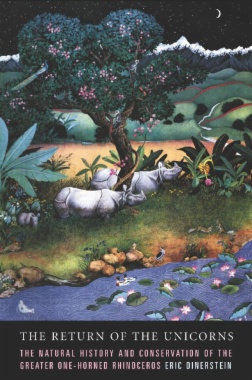Beginning in 1984, Eric Dinerstein led a team directly responsible for the recovery of the greater one-horned rhinoceros in the Royal Chitwan National Park in Nepal, where the population had once declined to as few as 100 rhinos. The Return of the Unicorns is an account of what it takes to save endangered large mammals. In its pages, Dinerstein outlines the multifaceted recovery program—structured around targeted fieldwork and scientific research, effective protective measures, habitat planning and management, public-awareness campaigns, economic incentives to promote local guardianship, and bold, uncompromising leadership—that brought these extraordinary animals back from the brink of extinction. In an age when scientists must also become politicians, educators, fund-raisers, and activists to safeguard the subjects that they study, Dinerstein's inspiring story offers a successful model for large-mammal conservation that can be applied throughout Asia and across the globe.
- Table of Contents
- Foreword, by George B. Schaller
- Preface
- Introduction
- Part I: Vanishing Mammals, Vanishing Landscapes
- 1. Vanishing Mammals: The Rise and Fall of the Rhinoceroses
- 2. Culture, Conservation, and the Demand for Rhinoceros Horn
- 3. Vanishing Landscapes: The Flood Plain Ecosystem of Chitwan
- Part II: Biology of an Endangered Megaherbivore
- 4. Size and Sexual Dimorphism in Greater One-Horned Rhinoceros
- 5. The Biology of an Extinction-Prone Species: Facing Demographic, Genetic, and Environmental Threats
- 6. Life on the Flood Plain: Spacing and Ranging Behavior, Feeding Ecology, and Activity Patterns
- 7. Male Dominance, Reproductive Success, and the "Incisor Size Hypothesis"
- 8. Endangered Phenomena: Rhinoceros as Landscape Architects
- Part III: The Recovery of Endangered Large Mammal Populations and their Habitats in Asia
- 9. Does Privately Owned Ecotourism Support Conservation of Charismatic Megafauna?
- 10. Making Room for Megafauna: Promoting Local Guardianship of Endangered Species and Landscape-scale Conservation
- 11. The Recovery of Rhinoceros and Other Asian Megafauna Conclusion
- Appendix A: Methods
- Appendix B: Measurements and other Physical Features of greater one-horned rhinoceros captured in Royal Chitwan National Park, Nepal
- Appendix C: Demographic and Genetic Data
- Appendix D: Seasonal Home Range and Daily Movements
- Appendix E: A Profile of Rhinoceros Behavior
- Appendix F: Reproductive Histories of Adult Female Rhinoceros
- References
- Index

